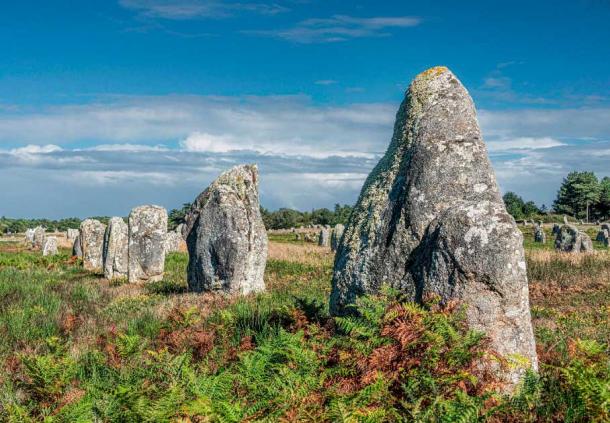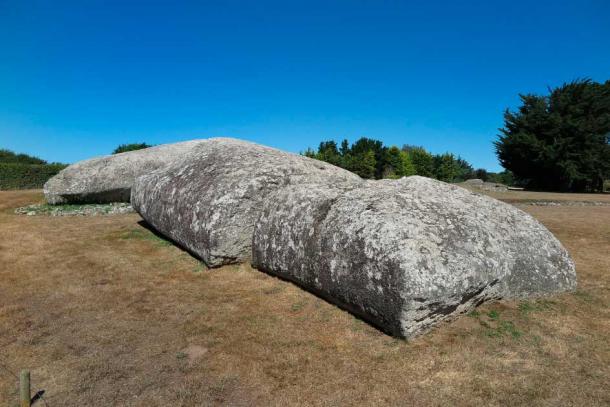The Carnac stones are an exceptionally dense collection of megalithic sites around the French village of Carnac, in Brittany, consisting of more than 3,000 prehistoric standing stones and erected by the pre-Celtic people of Brittany. These megalithic wonders are the largest such collection on the planet, however their purpose has never been discovered.
A Patterned Landscape
The Carnac Stones consist of both single standing stones (menhirs) and multi-stone clusters (dolmens) arranged in rows and patterns across the landscape. The main group of stone alignments involves 12 converging rows of standing stones stretching more than a kilometer with the remains of a stone circle at either end. The largest stones, around 4m high, are at the western end and they become smaller along the length of the alignment reaching around 0.6m in height.
It is thought that the stones were erected during the Neolithic period which lasted from 4500 BC until 2000 BC. In reality, archaeologists have had great difficulty in establishing accurate dates as little material was found beneath them that could be used for radiocarbon dating.
The Purpose of the Carnac Stones
Local myth states that a Roman legion was on the march when the wizard Merlin turned them into stone. Archaeologically speaking, the original purpose of the Carnac stones remains a mystery, and there are many theories but no definitive answers.
Some archaeologists believe that the stones served a ritual or religious purpose, possibly as part of a burial site, or a site for fertility rites. Others suggest that the stones were used for marking property boundaries, detecting earthquakes, honoring ancestors, commemorating significant events in the lives of the pre-Celtic people who erected them, or simply a symbol of the power and prestige of the people who built them.

The Carnac stones were arranged in rows. Source: Karl Allen Lugmayer / Adobe Stock
Astronomical Observation
One of the most popular theories, is that the Carnac stones functioned as an ancient astronomical observatory. The stone formations may have acted as calendars, so that ancient farmers knew the seasons and when to plant and harvest their crops and the priests could foretell phenomena such as eclipses of the sun and moon.
Some of the Carnac stones are aligned with the sun and the moon. The most famous of these alignments is the “Grand Menhir Brisé,” a broken menhir that stands over 20 feet tall and is believed to be the largest standing stone ever erected by humans. The Grand Menhir Brisé was aligned with the setting sun during the winter solstice, which suggests that it may have been used to mark the changing seasons.

Grand Menhir Brisé, the largest stone at Carnac. Source: shorty25 / Adobe Stock
Other stones in the Carnac complex are aligned with the moon and stars, indicating that the pre-Celtic people who built them may have had a sophisticated understanding of astronomy. However, because the pre-Celtic people who constructed the Carnac stones left no written records, the true purpose of these remarkable megaliths remains a subject of ongoing research and speculation.
Top image: The Carnac Stones, Brittany, France. Source: guitou60 / Adobe Stock
By Joanna Gillan
Related posts:
Views: 0
 RSS Feed
RSS Feed

















 February 26th, 2023
February 26th, 2023  Awake Goy
Awake Goy  Posted in
Posted in  Tags:
Tags: 
















